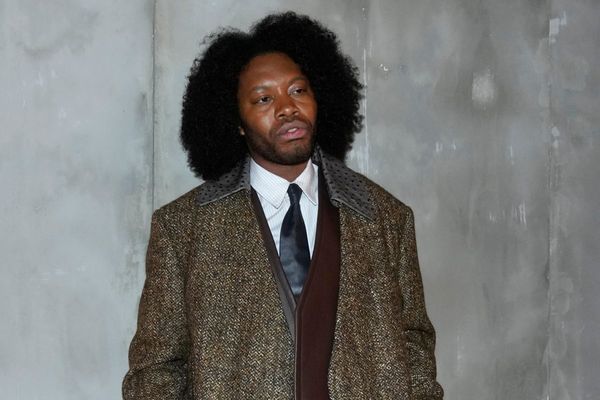The assailants in several recent mass shootings left behind messages inscribed on bullet casings, posing a dilemma for journalists who want to inform the public without inspiring copycats.
Why it matters: Media outlets don't typically publish manifestos from shooters, but extremism experts warn the messages on the bullets may play the same role.
What they're saying: "[T]he highest order of business" for journalists is to try and get to the facts without giving shooters the attention they seek, but that's become more difficult with this new wave of "performative" attacks, Terence Samuel, chair of the National Press Foundation Board of Directors and former editor-in-chief at USA Today, told Axios.
Threat level: The internet subculture that fosters and spreads extremist communities online isn't going anywhere, and journalists have to learn how to navigate the toxic ideology they put out.
- Megan Squire, a data analyst and extremist researcher, told Axios that attaching memes to an attack is the logical way to connect to and inspire others to do the same in the age of social media.
- "They know that whatever they write on the gun, the bullet, the manifesto, it's going to make it into the news cycle, because people are hungry to understand the motive," Squire said.
Driving the news: Several recent shootings such as the murder of conservative activist Charlie Kirk have included the messages, which spurred partisan finger pointing.
- Extremism researchers have seen an increase in attackers often without a clearly stated ideology who are "deeply online, and they just want to sort of see chaos," Matt Kriner, the executive director of the Institute for Countering Digital Extremism, told Axios.
Zoom in: Bruce Shapiro, the executive director of the Global Center for Journalism and Trauma, emphasized that journalists should ask themselves "whose story are we telling?" as they write, so that they can keep the interests, voices and experiences of survivors at the center of coverage.
- "As human beings, we find it much easier to focus on a dramatic, violent act, no matter how horrific, than to focus on the real experiences and needs of the people it leaves behind," he said.
The bottom line: "I'm not saying never quote a manifesto or never say what was on a bullet, because there may be times when it's crucial to the public understanding of the story," Shapiro said.
- "But I would also say that when we use those kinds of details, make sure we don't give it more political meaning than it really has," he added.
Go deeper: Study finds 1 in 15 U.S. adults experienced a mass shooting firsthand







